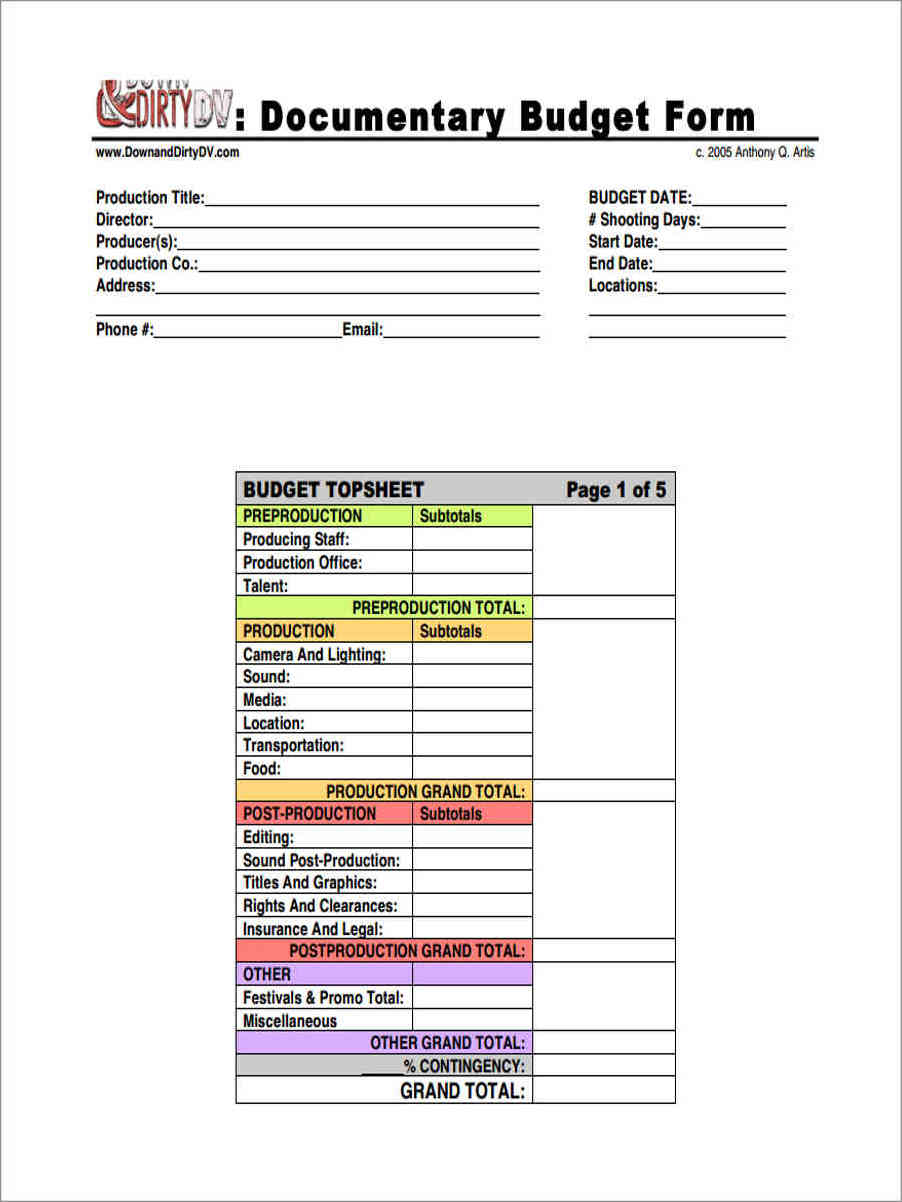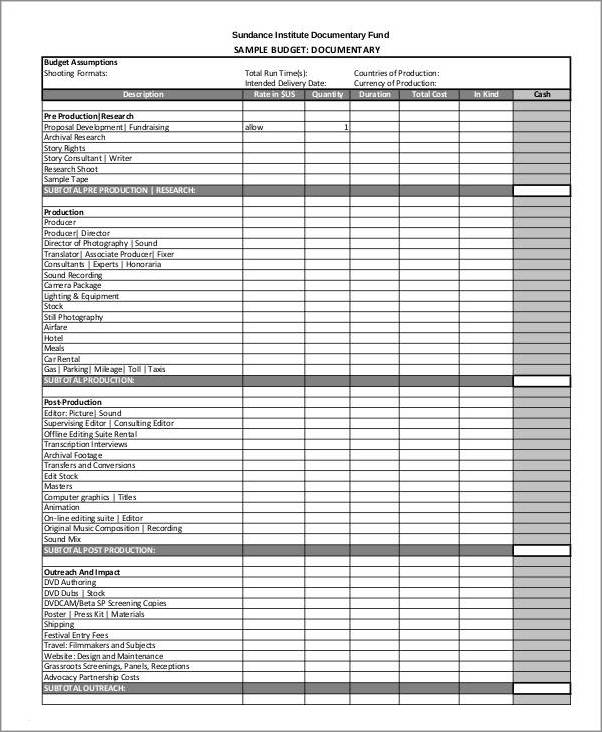Documentaries are a powerful medium for storytelling, shedding light on important issues and capturing real-life experiences. Whether you are a budding filmmaker or an experienced professional, understanding the documentary budgeting process is crucial for a successful project. A documentary budget is a financial plan outlining the estimated costs and resources needed to produce a documentary film. It serves as a roadmap for the entire production, ensuring that all aspects of the project, from pre-production to post-production, are accounted for.
The Key Components of a Documentary Budget
Creating a documentary budget requires careful consideration of various elements. Here are the key components that should be included:
1. Pre-production Costs
Pre-production costs cover everything that needs to be done before the actual filming begins. This includes research, script development, location scouting, hiring crew members, obtaining permits, and securing rights for footage or music. It is important to allocate sufficient funds for pre-production as it sets the foundation for the entire project.
2. Production Costs
Production costs encompass all expenses incurred during the actual filming process. This includes equipment rental, travel and accommodation for the crew, on-set meals, insurance, and any other logistical expenses. It is essential to have a clear understanding of the scope of your documentary to accurately estimate production costs.
3. Post-production Costs
Post-production costs involve editing, sound design, color grading, visual effects, and the creation of a final cut of the documentary. Additionally, budgeting for post-production should also include costs for music licensing, narration, and any other necessary elements to enhance the overall quality of the film.
4. Marketing and Distribution Costs
Marketing and distribution costs are often overlooked but are crucial for reaching a wider audience. This includes creating a trailer, designing promotional materials, submitting the documentary to film festivals, and marketing campaigns. Distribution costs may include fees for online platforms, DVD production, or theatrical releases.
5. Contingency Fund
A contingency fund is a buffer for unexpected expenses or changes in the project. It is advisable to allocate around 10-15% of the total budget as a contingency fund to account for any unforeseen circumstances that may arise during production or post-production.
6. Administrative Costs
Administrative costs include expenses related to paperwork, legal fees, permits, insurance, and accounting. It is important to allocate funds for these administrative tasks to ensure compliance with legal requirements and proper financial management.
7. Miscellaneous Costs
Miscellaneous costs may vary depending on the nature of the documentary. This could include licensing fees for archival footage or photographs, travel expenses for interviews or research, translators or interpreters, or any other unique expenses specific to your project.




Tips for Creating a Documentary Budget
Creating a documentary budget can be challenging, but here are some tips to help you navigate the process:
- Research Similar Projects: Look at other documentaries with similar themes or styles to get an idea of their budgets. This can serve as a starting point for estimating your own expenses.
- Break Down Costs: Break down each component of your budget into smaller, manageable items. This will help you identify areas where you can potentially cut costs or allocate funds more efficiently.
- Seek Professional Advice: If you are new to documentary filmmaking, consider consulting with experienced producers or production accountants who can provide guidance on budgeting best practices.
- Be Realistic: It’s important to be realistic when budgeting for your documentary. Avoid underestimating costs, as this can lead to financial constraints during production. Factor in both fixed and variable costs to ensure accuracy.
- Keep Track of Expenses: Maintain a detailed record of all expenses throughout the production process. This will help you stay within budget and provide a clear overview of where the funds are being allocated.
- Review and Revise: Budgeting is an iterative process. Regularly review and revise your budget as the project progresses to ensure it remains accurate and up-to-date.
Conclusion
Creating a documentary budget is an essential step in the filmmaking process. It allows you to plan and allocate resources effectively, ensuring a smooth production from start to finish. By understanding the key components of a documentary budget and following best practices, you can increase the chances of producing a compelling documentary that resonates with audiences worldwide. So, take the time to carefully craft your budget and embark on your documentary filmmaking journey with confidence.
Documentary Budget Template Excel – Download
